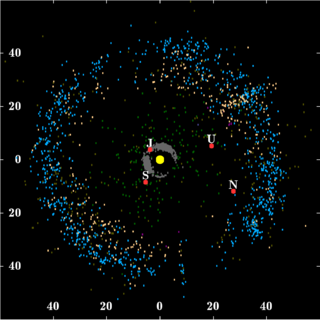
The Kuiper belt is a circumstellar disc in the outer Solar System, extending from the orbit of Neptune at 30 astronomical units (AU) to approximately 50 AU from the Sun. It is similar to the asteroid belt, but is far larger—20 times as wide and 20–200 times as massive. Like the asteroid belt, it consists mainly of small bodies or remnants from when the Solar System formed. While many asteroids are composed primarily of rock and metal, most Kuiper belt objects are composed largely of frozen volatiles, such as methane, ammonia, and water. The Kuiper belt is home to most of the objects that astronomers generally accept as dwarf planets: Orcus, Pluto, Haumea, Quaoar, and Makemake. Some of the Solar System's moons, such as Neptune's Triton and Saturn's Phoebe, may have originated in the region.

The Oort cloud, sometimes called the Öpik–Oort cloud, is theorized to be a vast cloud of icy planetesimals surrounding the Sun at distances ranging from 2,000 to 200,000 AU. The concept of such a cloud was proposed in 1950 by the Dutch astronomer Jan Oort, in whose honor the idea was named. Oort proposed that the bodies in this cloud replenish and keep constant the number of long-period comets entering the inner Solar System—where they are eventually consumed and destroyed during close approaches to the Sun.
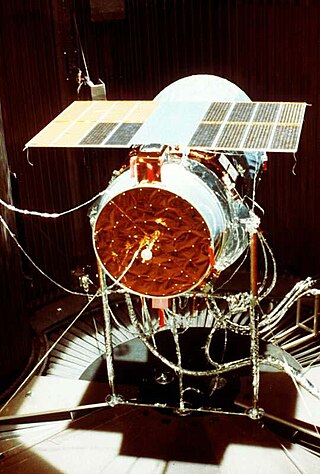
The Infrared Astronomical Satellite (IRAS) was the first space telescope to perform a survey of the entire night sky at infrared wavelengths. Launched on 25 January 1983, its mission lasted ten months. The telescope was a joint project of the United States (NASA), the Netherlands (NIVR), and the United Kingdom (SERC). Over 250,000 infrared sources were observed at 12, 25, 60, and 100 micrometer wavelengths.

New Horizons is an interplanetary space probe launched as a part of NASA's New Frontiers program. Engineered by the Johns Hopkins University Applied Physics Laboratory (APL) and the Southwest Research Institute (SwRI), with a team led by Alan Stern, the spacecraft was launched in 2006 with the primary mission to perform a flyby study of the Pluto system in 2015, and a secondary mission to fly by and study one or more other Kuiper belt objects (KBOs) in the decade to follow, which became a mission to 486958 Arrokoth. It is the fifth space probe to achieve the escape velocity needed to leave the Solar System.

Sedna is a dwarf planet in the outermost reaches of the Solar System, orbiting the Sun beyond the orbit of Neptune. Discovered in 2003, the planetoid's surface is one of the reddest known among Solar System bodies. Spectroscopy has revealed Sedna's surface to be mostly a mixture of the solid ices of water, methane, and nitrogen, along with widespread deposits of reddish-colored tholins, a chemical makeup similar to those of some other trans-Neptunian objects. Within the range of uncertainties, it is tied with the dwarf planet Ceres in the asteroid belt as the largest dwarf planet not known to have a moon. Its diameter is roughly 1,000 km. Owing to its lack of known moons, the Keplerian laws of planetary motion cannot be employed for determining its mass, and the precise figure as yet remains unknown.

Marc William Buie is an American astronomer and prolific discoverer of minor planets who works at the Southwest Research Institute in Boulder, Colorado in the Space Science Department. Formerly he worked at the Lowell Observatory in Flagstaff, Arizona, and was the Sentinel Space Telescope Mission Scientist for the B612 Foundation, which is dedicated to protecting Earth from asteroid impact events.

The scattered disc (or scattered disk) is a distant circumstellar disc in the Solar System that is sparsely populated by icy small Solar System bodies, which are a subset of the broader family of trans-Neptunian objects. The scattered-disc objects (SDOs) have orbital eccentricities ranging as high as 0.8, inclinations as high as 40°, and perihelia greater than 30 astronomical units (4.5×109 km; 2.8×109 mi). These extreme orbits are thought to be the result of gravitational "scattering" by the gas giants, and the objects continue to be subject to perturbation by the planet Neptune.

15810 Arawn (provisional designation 1994 JR1) is a trans-Neptunian object (TNO) from the inner regions of the Kuiper belt, approximately 133 kilometres (83 mi) in diameter. It belongs to the plutinos, the most populous class of resonant TNOs. It was named after Arawn, the ruler of the underworld in Welsh mythology, and was discovered on 12 May 1994, by astronomers Michael Irwin and Anna Żytkow with the 2.5-metre Isaac Newton Telescope at Roque de los Muchachos Observatory in the Canary Islands, Spain.
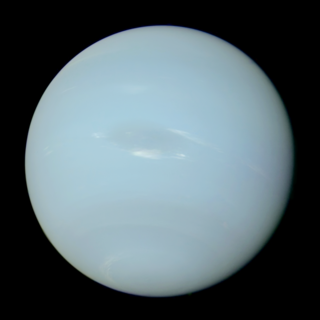
Neptune has been directly explored by one space probe, Voyager 2, in 1989. As of 2024, there are no confirmed future missions to visit the Neptunian system, although a tentative Chinese mission has been planned for launch in 2024. NASA, ESA, and independent academic groups have proposed future scientific missions to visit Neptune. Some mission plans are still active, while others have been abandoned or put on hold.
The Taiwanese–American Occultation Survey (TAOS) is a robotic survey of the Outer Solar System. TAOS uses an array of four 50 cm aperture telescopes to monitor background stars awaiting the alignment of an Outer Solar System with a star target: an occultation. Small objects in the Outer Solar System that are too small to be observed by direct observations at this time can be probed with this technique. Occultation surveys take advantage of diffraction effects during the transit of the occulting object in front of a background star to constraint the size and distance of the occulter. TAOS is sensitive to occultations by Kuiper Belt Objects (KBOs) larger than about 500 m in diameter and to Sedna-like objects.

Space research is scientific study carried out in outer space, and by studying outer space. From the use of space technology to the observable universe, space research is a wide research field. Earth science, materials science, biology, medicine, and physics all apply to the space research environment. The term includes scientific payloads at any altitude from deep space to low Earth orbit, extended to include sounding rocket research in the upper atmosphere, and high-altitude balloons.

486958 Arrokoth (provisional designation 2014 MU69; formerly nicknamed Ultima Thule) is a trans-Neptunian object located in the Kuiper belt. Arrokoth became the farthest and most primitive object in the Solar System visited by a spacecraft when the NASA space probe New Horizons conducted a flyby on 1 January 2019. Arrokoth is a contact binary 36 km (22 mi) long, composed of two planetesimals 21 and 15 km (13 and 9 mi) across, that are joined along their major axes. With an orbital period of about 298 years and a low orbital inclination and eccentricity, Arrokoth is classified as a cold classical Kuiper belt object.

2014 PN70 (internally designated g12000JZ, g1 and PT3) is a trans-Neptunian object from the cold classical Kuiper belt located in the outermost region of the Solar System. It measures approximately 40 kilometers (25 miles) in diameter. The object was first observed by the New Horizons Search Team using the Hubble Space Telescope on 6 August 2014, and was a proposed flyby target for the New Horizons probe until 2015, when the alternative target 486958 Arrokoth was selected.
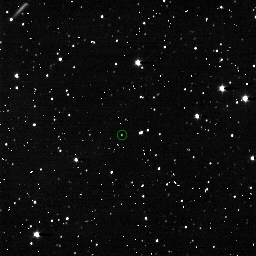
2014 OS393, unofficially designated e31007AI, e3 and PT2, is a binary trans-Neptunian object in the classical Kuiper belt, the outermost region of the Solar System. It was first observed by the New Horizons KBO Search using the Hubble Space Telescope on 30 July 2014. Until 2015, when the object 486958 Arrokoth was selected, it was a potential flyby target for the New Horizons probe. Estimated to be approximately 42 kilometres (26 mi) in diameter, the object had a poorly determined orbit as it had been observed for only a few months. With MPEC 2024-E99 the Minor Planet Center published on 6 March 2024 additional observations by New Horizons KBO Search-Subaru which allowed to compute a fairly reliable orbit.

2014 MT69 (internally designated 0720090F in the context of the Hubble Space Telescope, and 7 in the context of the New Horizons mission) is a cold classical Kuiper belt object (KBO) and was formerly a potential flyby target for the New Horizons probe. The object measures approximately 20–90 kilometers (12–56 miles) in diameter.
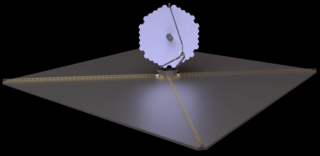
The Large Ultraviolet Optical Infrared Surveyor, commonly known as LUVOIR, is a multi-wavelength space telescope concept being developed by NASA under the leadership of a Science and Technology Definition Team. It is one of four large astrophysics space mission concepts studied in preparation for the National Academy of Sciences 2020 Astronomy and Astrophysics Decadal Survey.

Fine Guidance Sensor (FGS) for the Hubble Space Telescope is a system of three instruments used for pointing the telescope in space, and also for astrometry and its related sciences. To enable aiming the telescope at a specific spot in the sky, each FGS combines optics and electronics. There are three Hubble FGS, and they have been upgraded over the lifetime of the telescope by crewed Space Shuttle missions. The instruments can support pointing of 2 milli-arc seconds. The three FGS are part of the Hubble Space Telescope's Pointing Control System, aka PCS. The FGS function in combination with the Hubble main computer and gyroscopes, with the FGS providing data to the computer as sensors which enables the HST to track astronomical targets.
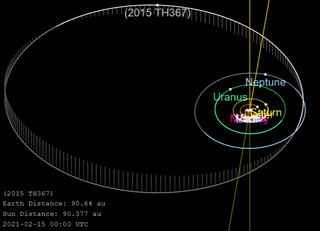
2015 TH367 is a trans-Neptunian object approximately 220 kilometers in diameter. As of 2021 it is approximately 90 AU (13 billion km) from the Sun. At the time of its announcement in March 2018, it was the third most distant observed natural object in the Solar System, after Eris and 2014 UZ224.

C/2014 UN271 (Bernardinelli–Bernstein), simply known as C/2014 UN271 or Comet Bernardinelli–Bernstein (nicknamed BB), is a large Oort cloud comet discovered by astronomers Pedro Bernardinelli and Gary Bernstein in archival images from the Dark Energy Survey. When first imaged in October 2014, the object was 29 AU (4.3 billion km; 2.7 billion mi) from the Sun, almost as far as Neptune's orbit and the greatest distance at which a comet has been discovered. With a nucleus diameter of at least 120 km (75 mi), it is the largest Oort cloud comet known. It is approaching the Sun and will reach its perihelion of 10.9 AU (just outside of Saturn's orbit) in January 2031. It will not be visible to the naked eye because it will not enter the inner Solar System.























